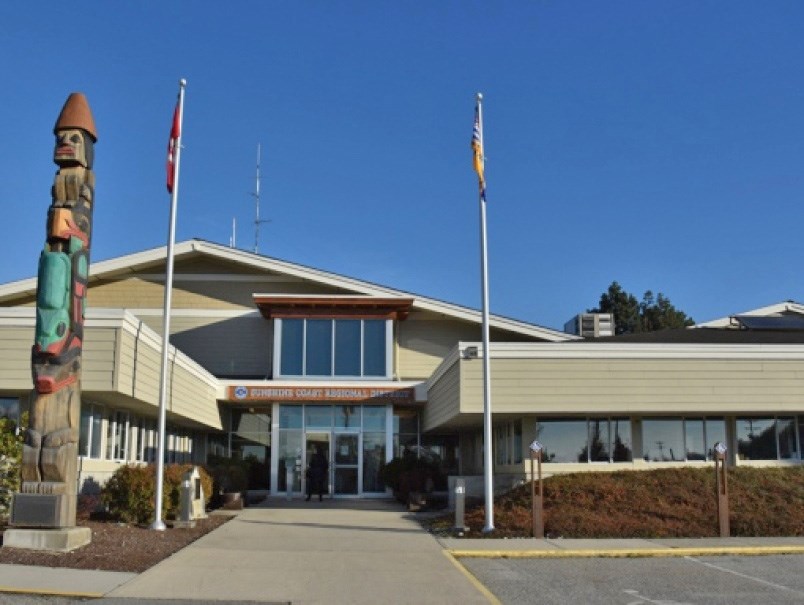Sunshine Coast Regional District (SCRD) directors have accepted staff recommendations to issue a development variance permit for the historic Halfmoon Bay General Store while also seeking to address concerns about vehicle traffic in the area.
Directors had delayed the redevelopment application for the store property at a Nov. 12 meeting at the request of Area B director Lori Pratt in order “to make sure we have covered off concerns that have been received [and] to make sure the [redevelopment project] applicants have heard them.”
SCRD senior planner Yuli Siao told the Dec. 10 meeting of the planning and community development committee that since Nov. 12, additional public comments had been received. “In total, 54 members of the public indicate support for the proposal whereas 15 were opposing,” Siao said. “Throughout the application process staff have continually conveyed public feedback to the applicant. And in response, the latest design of the development has undergone numerous revisions and most of the critical concerns raised by residents have been addressed.”
In addition to approving the permit, directors agreed to a motion made by Pratt to request that the provincial Ministry of Transportation and Infrastructure consider implementing traffic-calming measures in the area of the store on Mintie Road.
“This is a property, and this is an area, that traditionally began as a commercial and industrial hub and has gradually evolved over the years to become a primarily residential area,” said Pratt. “I've heard very clearly from the residents the concerns around the speed of traffic. The advocacy that they’ve done in the past for traffic calming has fallen on deaf ears.”
Microphones for watermains
The SCRD is considering the purchase and testing of a high-tech device called a leak correlator, which uses microphones to identify leaks in watermains.
“A segment of main is evaluated between two microphones that are attached to a hydrant, valve or other access point,” district staff explained in a report to the SCRD’s Dec. 17 infrastructure committee. The report said a leak correlator would perform the same function as the geophones currently used by staff, but “are more sensitive and more efficient in certain applications.”
Water leaks in mains aren’t usually noticed by staff or reported by area residents until they lead to a noticeable pooling of water, the report noted. Smaller leaks or leaks on sand or fractured bedrock where water can flow downwards may not be noticed but could be detected with the new technology.
The device would allow for the inspection for leaks of all watermains once a year, the report added. “A two-person crew could theoretically inspect most of the SCRD’s 400 kilometres of watermains in half a year,” it said.
Staff recommended that a leak correlator be assessed for one year to see how well it helps identify leaks in the regional district’s aging water infrastructure. The device costs $40,000, and staff costs are estimated at another $150,000. The committee passed a motion that recommended the idea be taken up in the 2021 budget process for consideration.



